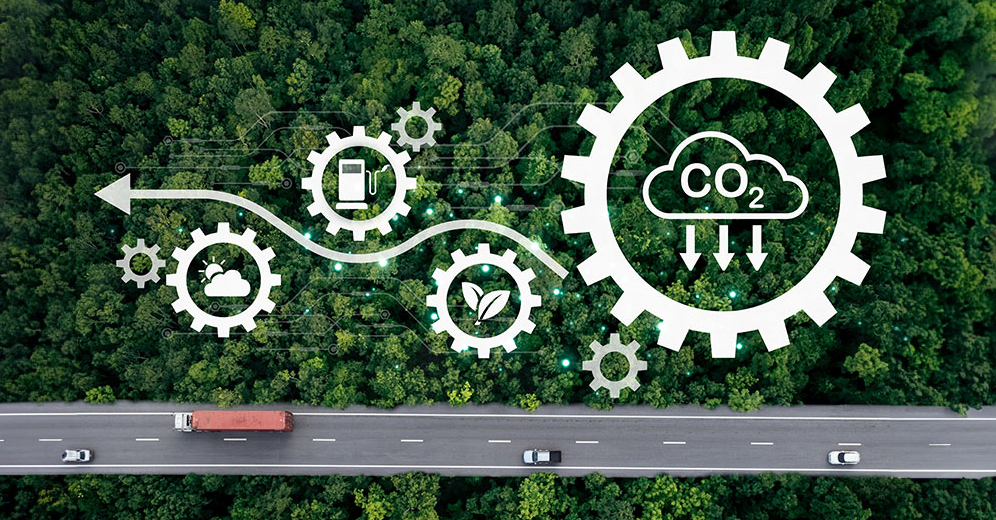Carbon reduction in the supply chain – three fundamental challenges and solutions

Concepts such as decarbonization, net zero or carbon neutrality are now part of the common discourse in customer-supplier relationships. The influence of the supply chain on a product’s final ecological footprint (product carbon footprint, PCF for short) is already well known and the efforts to reduce the emissions (Scope 3 upstream) have taken place in many industrial sectors.
That’s why this article is not about why reducing carbon emissions in the supply chain is the biggest lever to achieve their climate goals. Many studies already describe this and it has been discussed in webinars and at conferences. Rather, the following article will focus on the biggest challenges and highlight possible solutions.
Challenge 1 – Data quality and availability
To reduce Scope 3 emissions effectively, correct decisions and a good data basis are required. As a company, I create this data by gathering as much real data (primary data) as possible from the supply chain and relying less on standard values or factors (secondary data).
What sounds so simple, however, proves to be a significant challenge in practice.
- How do I retrieve the data?
- How do I consolidate them?
- Can my suppliers even deliver the data I need?
- Are the data I receive from my suppliers correct?
Even this seemingly simple question is challenging for many companies – Gartner, in its report “3 Steps to Accelerate Scope 3 Carbon Emissions Reduction in the Value Chain“, also identified data quality and availability as one of the most serious problems that companies have to overcome.
The PCF data can be queried in different ways. Via e-mail for individual products, via Excel or with a special collaboration tool. Choosing the right way is essential for feedback. It has been shown that e-mail and Excel are often used to launch initiatives, but they quickly reach their limits for all parties involved. Due to the lack of plausibility checks, neither option allows any conclusions to be drawn about data quality and creates further data silos.
For this reason, specialized software tools for the exchange of carbon data have become established, such as SupplyOn Product Footprint. In most cases, these tools offer an intuitive user interface, plausibility checks, are integrated into other business processes and are therefore part of an end-to-end collaboration process.
This is especially beneficial for small and medium-sized companies (SMEs), as they do not have to introduce additional software, but can work in their familiar environment. Standardized query templates across several customers also ensure greater user acceptance.
As a customer, I benefit from a higher return rate and high-quality data. If I want to ask for more details than those provided in the standardized templates, flexible software tools also offer the option of customization, so that I can obtain all the data I need from the suppliers to make my decision.
However, care must be taken here not to overload SMEs with overly specific questions, which can either take a very long time to answer or, in case of doubt, cannot be answered.
Challenge 2 – Efficiency
When I request primary data from my suppliers, it’s important to consider what resources they have to deal with the topic of PCF as a whole. As an OEM or Tier 1, I usually have specialists for lifecycle assessment, so-called LCA experts, who deal with this professionally and in most cases have a significantly larger team compared to a Tier 2, Tier 3 or even Tier 4. Hence, it’s crucial to recognize that my supplier does not have the same knowledge and resources as I do.
Efficiency is a critical success factor in collaboration. Using software solutions for data retrieval is often deemed efficient. In most cases, this is also easier and saves time compared to collaborating via emails or Excel files. However, the journey cannot and should not end there, as the data is initially without context and detached from other business processes.
Successful companies integrate the query of PCF values into existing processes along the product life cycle and thus create additional efficiency in collaboration. The purchasing process is a good example of this, as suppliers are already asked to submit their carbon data during the RfQ phase – parallel to the price information and integrated into the sourcing software. The supplier can use a tool to communicate with me as a customer, while I receive all the relevant data at the same time and in a bundled form.
SupplyOn Product Footprint’s seamless integration into the source-to-contract process provides decisive added value at this point, contributing to more efficient collaboration.
However, efficiency is not just a question of the right software. Transparency and communication with suppliers are also crucial in view of the different levels of knowledge about PCF and the limited internal and external resources. The more understanding and knowledge in the supply chain on the subject, the better and faster the data feedback will be.
Many companies therefore organize webinars, training sessions or entire supplier days specifically for their suppliers. SupplyOn supports its customers in this process and offers customized supplier community events to cover a wide range in an efficient and resource-saving manner.
Challenge 3 – Priority
The intensity with which companies advance decarbonization efforts is closely linked to the priority placed on sustainability. The importance of dealing with carbon data from the supply chain is influenced, for example, by the delivered industries, legal reporting requirements (keyword CBAM and CSRD) or the company’s own corporate goals.
Decarbonization competes with many other topics for attention and resources. Cost reduction, digitization, a shortage of specialists, delivery quality, availability – these are all challenges that also need to be overcome. It is therefore important to first define a clear strategy and prioritization within the company.
In order to make the importance of PCF values clear to my suppliers, transparency and communication are once again important success factors. Without close cooperation and involvement of suppliers, sustainable carbon reduction along the entire supply chain is not possible. Again, community events and supplier days are among the best practices.
In addition, the purchasing side can influence the priority given to suppliers by giving the PCF more weight in the award decision. It is already not uncommon today to take the carbon footprint of a product into account when making purchasing decisions. As the carbon price rises, the importance of the PCF will continue to increase.
Summary
In conclusion, it can be said that purchasing can make a major contribution to the decarbonization of the supply chain despite the major challenges. Selecting the appropriate software, implementing efficient, integrated internal and external processes, and maintaining transparent communication with suppliers are essential components.



